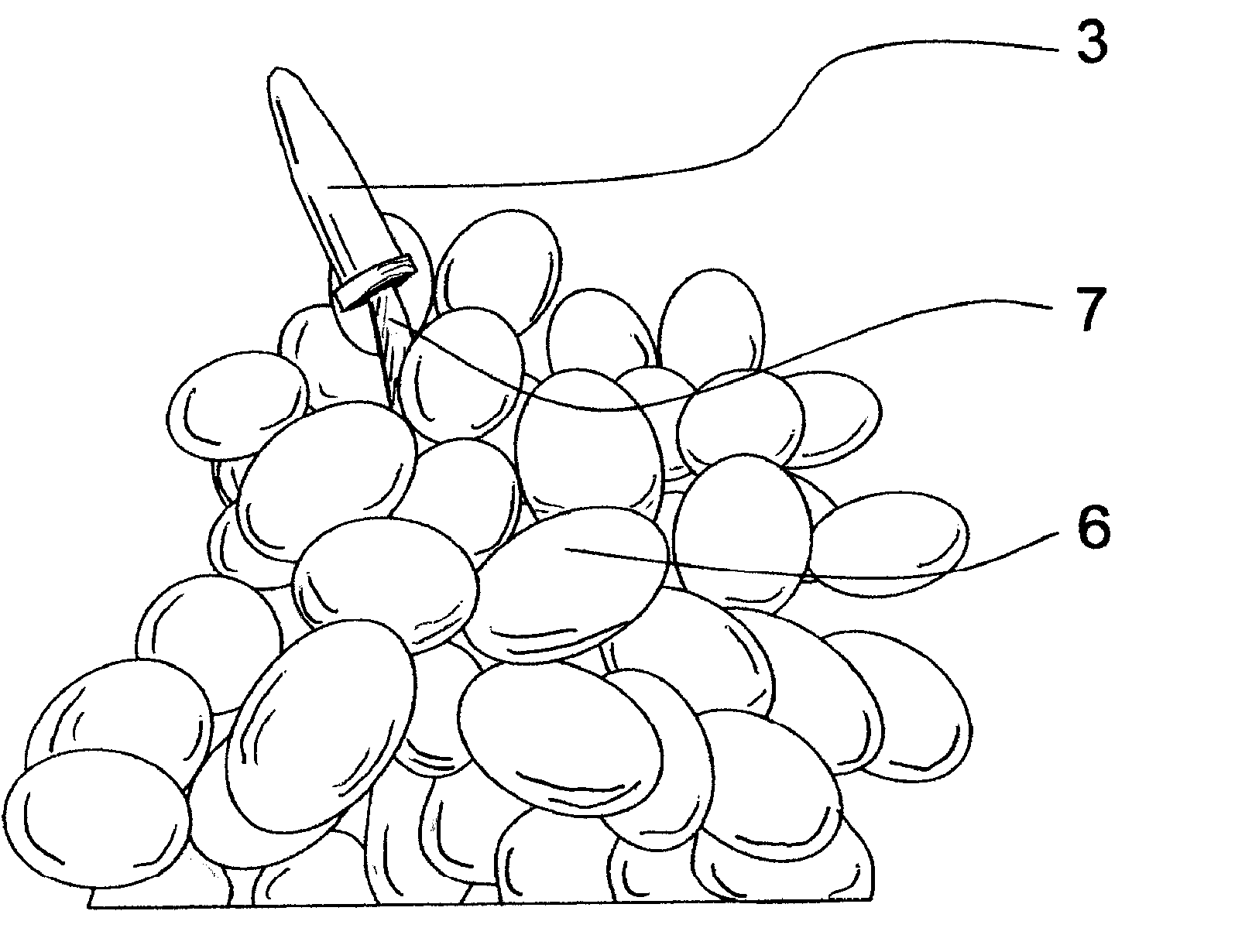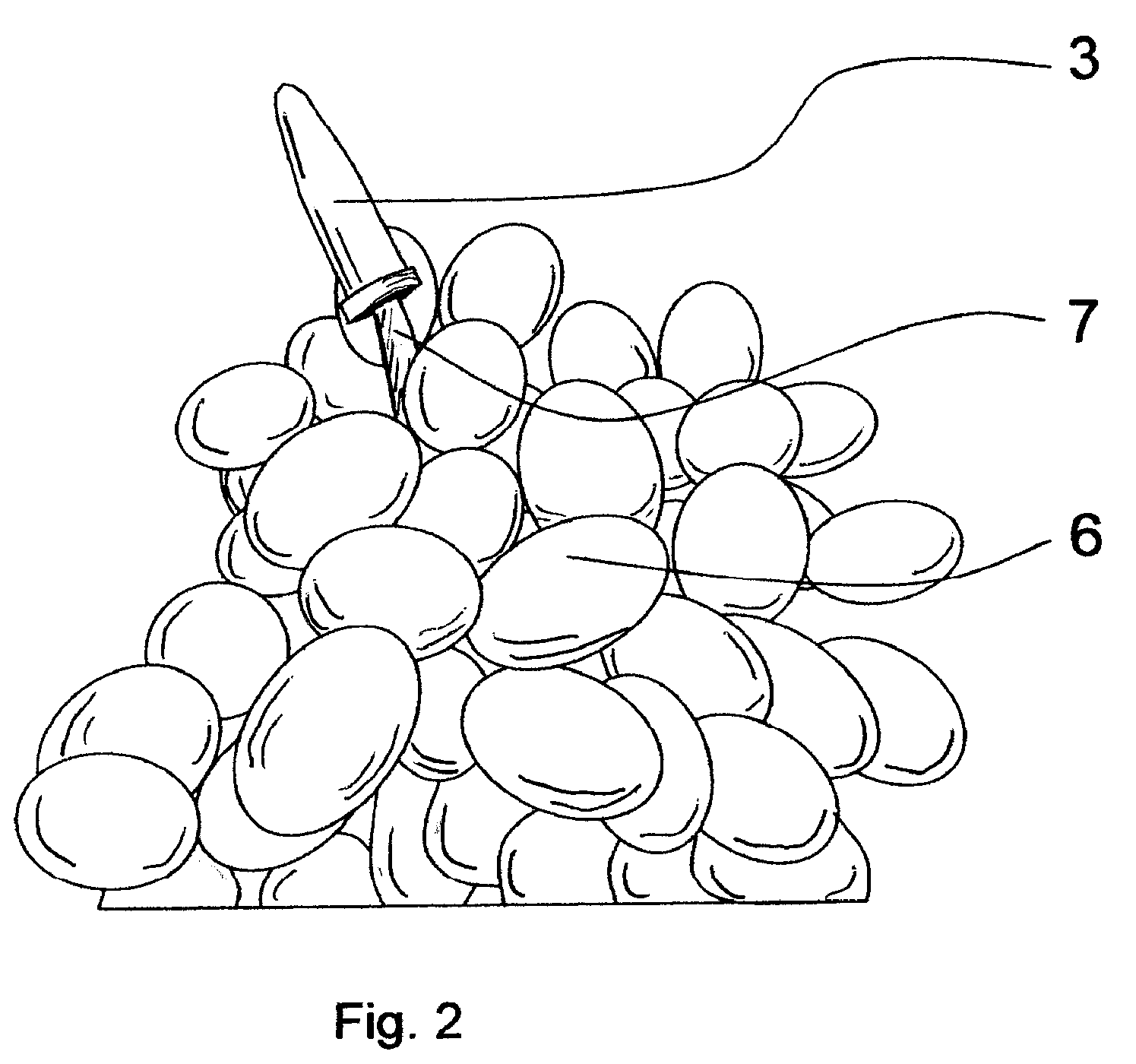Preserving composition and product for harvesting fruits and vegetables, and method for its use
a technology for preserving compositions and products, applied in the directions of milk preservation, container preventing decay, transportation and packaging, etc., can solve the problems of no longer being protected, being subject to the attack of bacteria and/or fungi, and decaying the live par
- Summary
- Abstract
- Description
- Claims
- Application Information
AI Technical Summary
Benefits of technology
Problems solved by technology
Method used
Image
Examples
example 1
[0071] A typical preparation of the present invention consists in adding 100 ml of water, 2 g MgCl2, 2 g glucose, 0.006 g HBO3, 0.2 g NaNO3 and 0.5 g KHPO4. The mixture is resulting in a clear solution. Then, 3.2 g of xantic gum are added and a thick solution is obtained. The solution is provided and incorporated into a capsule according to the present invention. The result of using this formula can be seen in FIG. 9 and corresponds to the R formula.
example 2
[0072] To 100 ml of water, 1 g CaCl2, 4 g glucose, 0,3 g HBO3, 0,3 g NaNO3, 0,2 g KHPO4, 0,1 g K2SO4, 0,2 g KNO3 and 2 ml of a 10 mM salicylic acid solution, are added. The mixture is stirred and a clear solution is obtained. Then, 2.9 g of guar gum is added. The resulting solution is incorporated to a capsule according to the present invention. FIG. 9 shows the N formula.
example 3
[0073] Any of the preparations already mentioned is used and applied over table grapes of the Thompson Seedless and Red Globe variety. Once the grape is cut from the vine, the device is immediately inserted into the stalk end and grapes are packaged as usual. Then, they are stored in a cold chamber between 0° C. and 2° C. for 30, 60 and 90 days to finally assess the conservation conditions. In parallel with this, grapes harvested to which the device containing the solution according to the present invention has not been applied, are subject to the same process and conditions. This process and conditions to which grapes are subjected to is identical to the process used commercially to store and send export fruit to final destinations.
[0074] The grape stored at the conditions previously mentioned, with and without the device of the present invention, was analyzed after 30, 60 and 90 days in order to check the effect of the invention on the visual quality conditions of fruit and to as...
PUM
 Login to View More
Login to View More Abstract
Description
Claims
Application Information
 Login to View More
Login to View More - R&D
- Intellectual Property
- Life Sciences
- Materials
- Tech Scout
- Unparalleled Data Quality
- Higher Quality Content
- 60% Fewer Hallucinations
Browse by: Latest US Patents, China's latest patents, Technical Efficacy Thesaurus, Application Domain, Technology Topic, Popular Technical Reports.
© 2025 PatSnap. All rights reserved.Legal|Privacy policy|Modern Slavery Act Transparency Statement|Sitemap|About US| Contact US: help@patsnap.com



